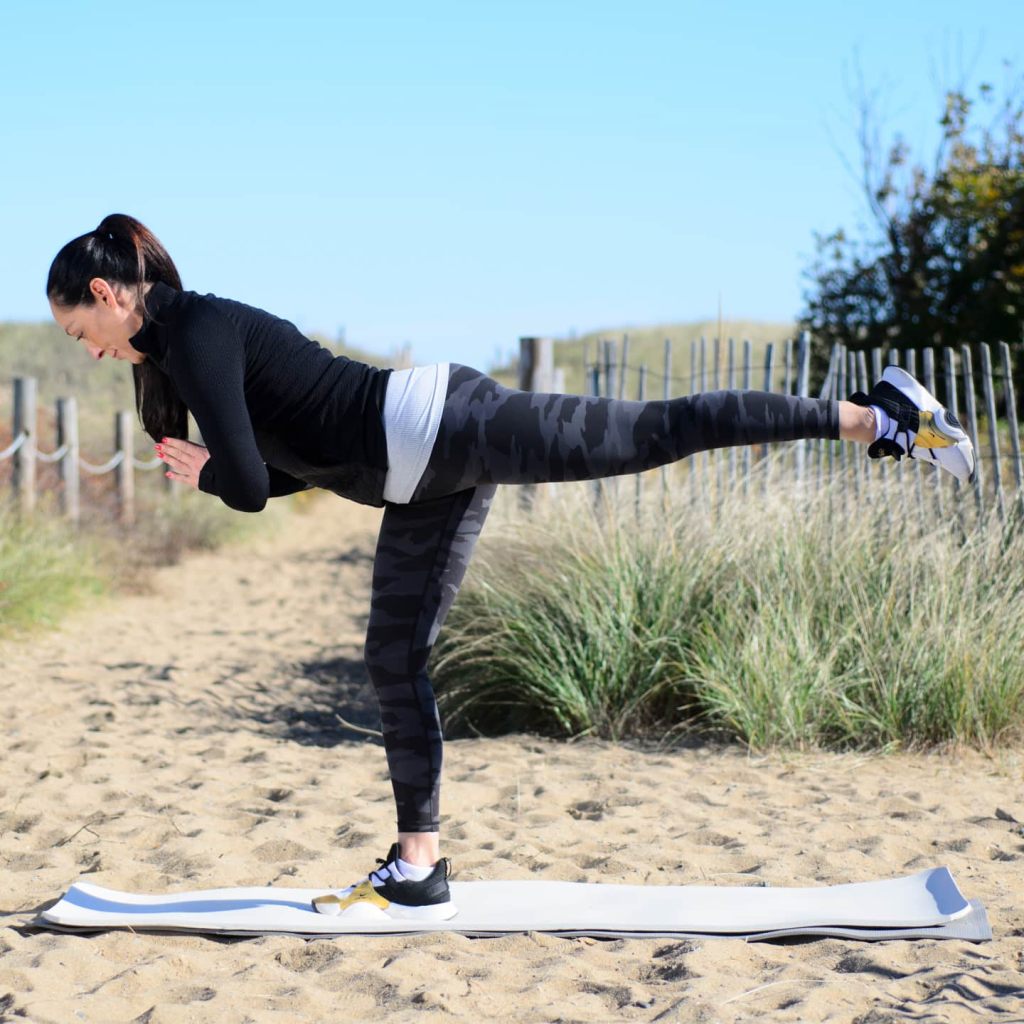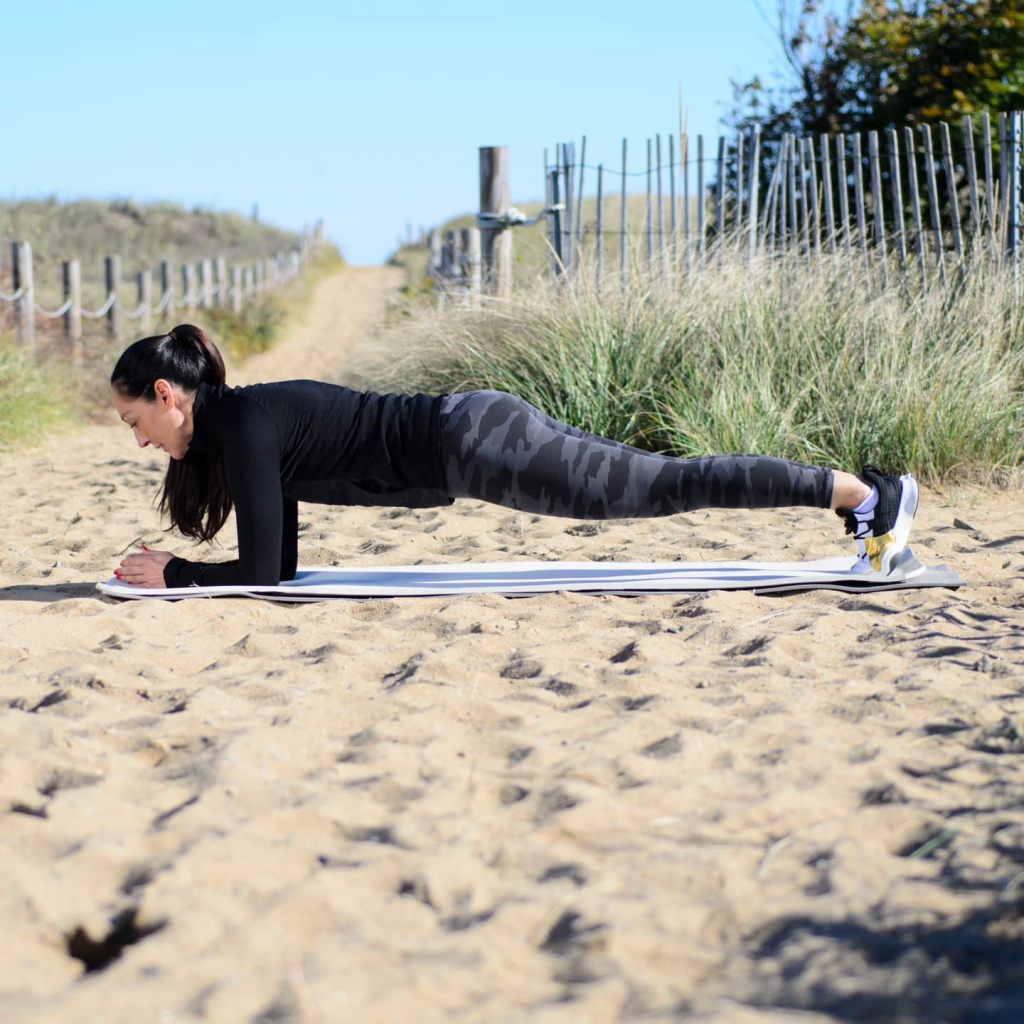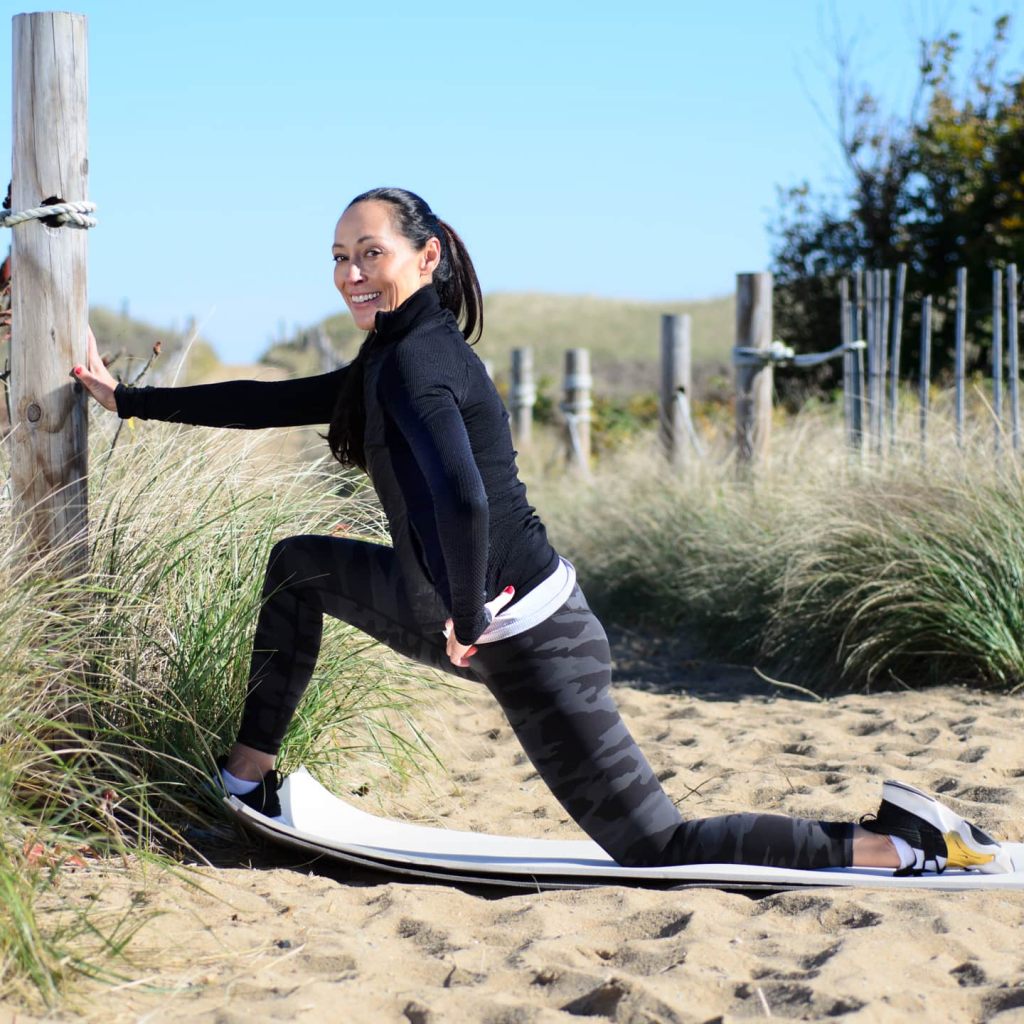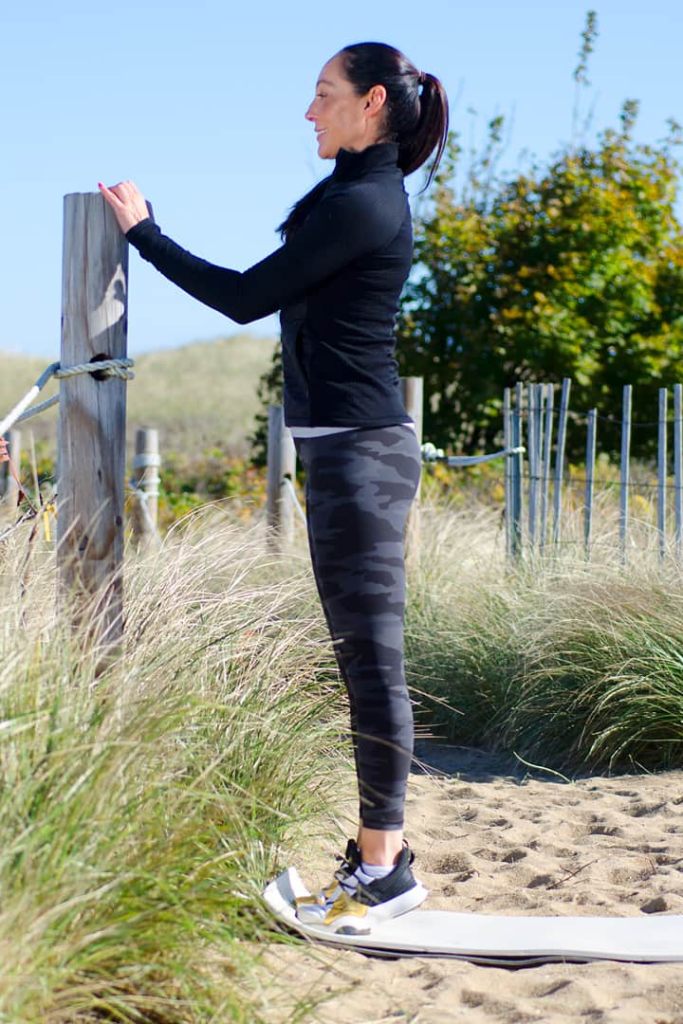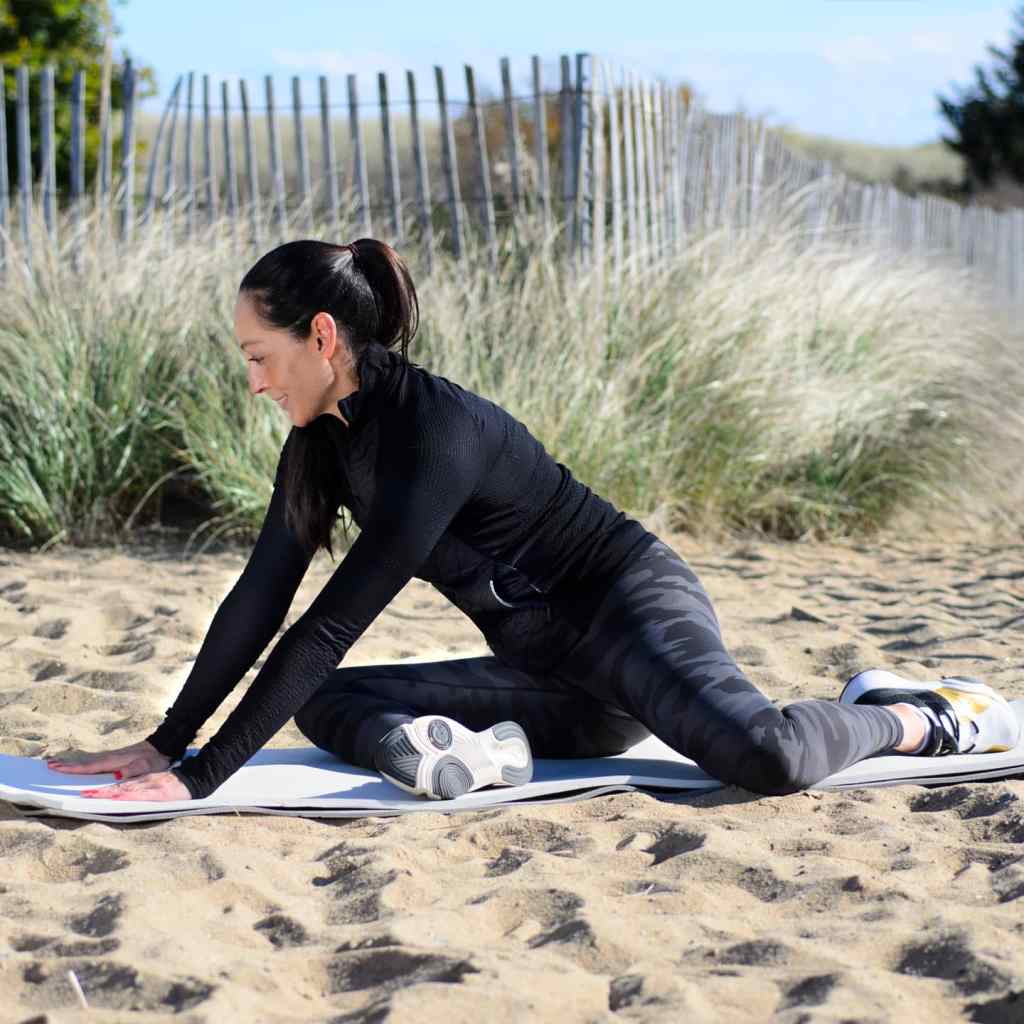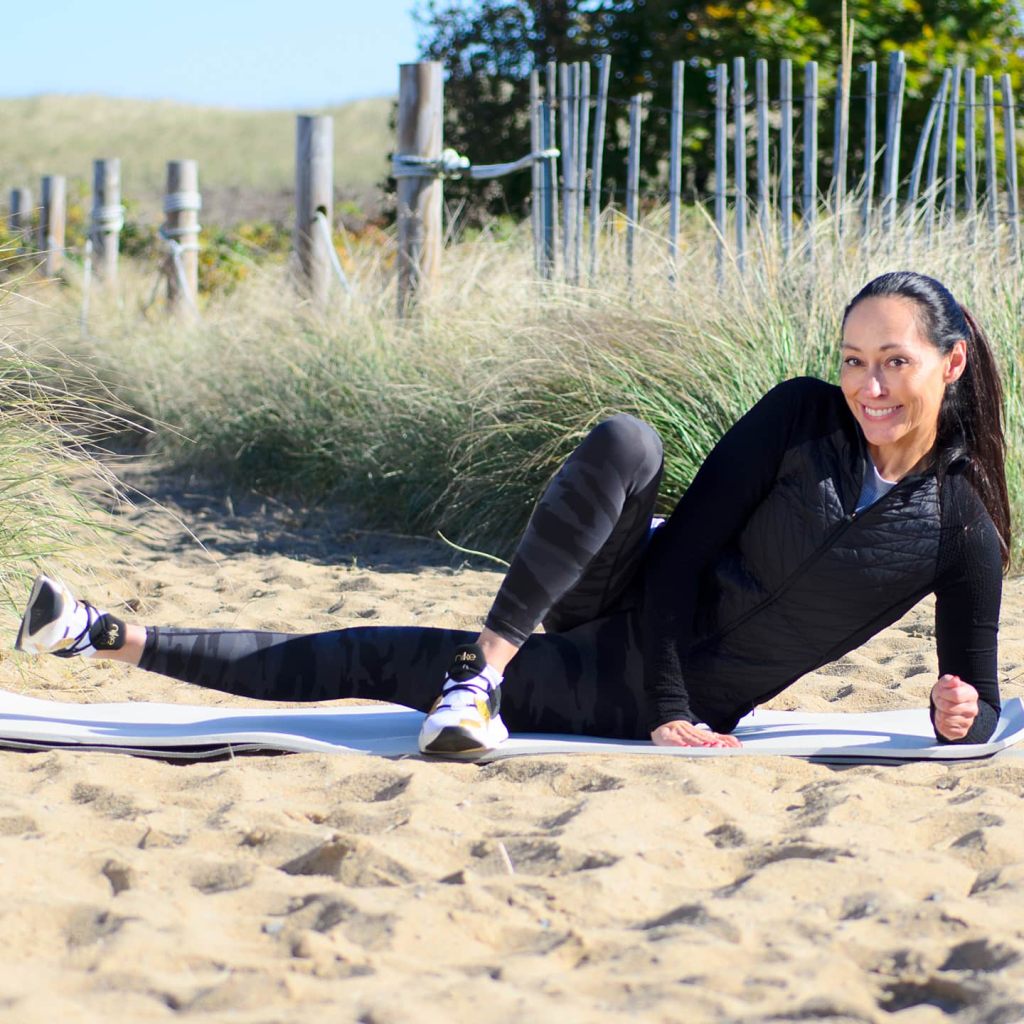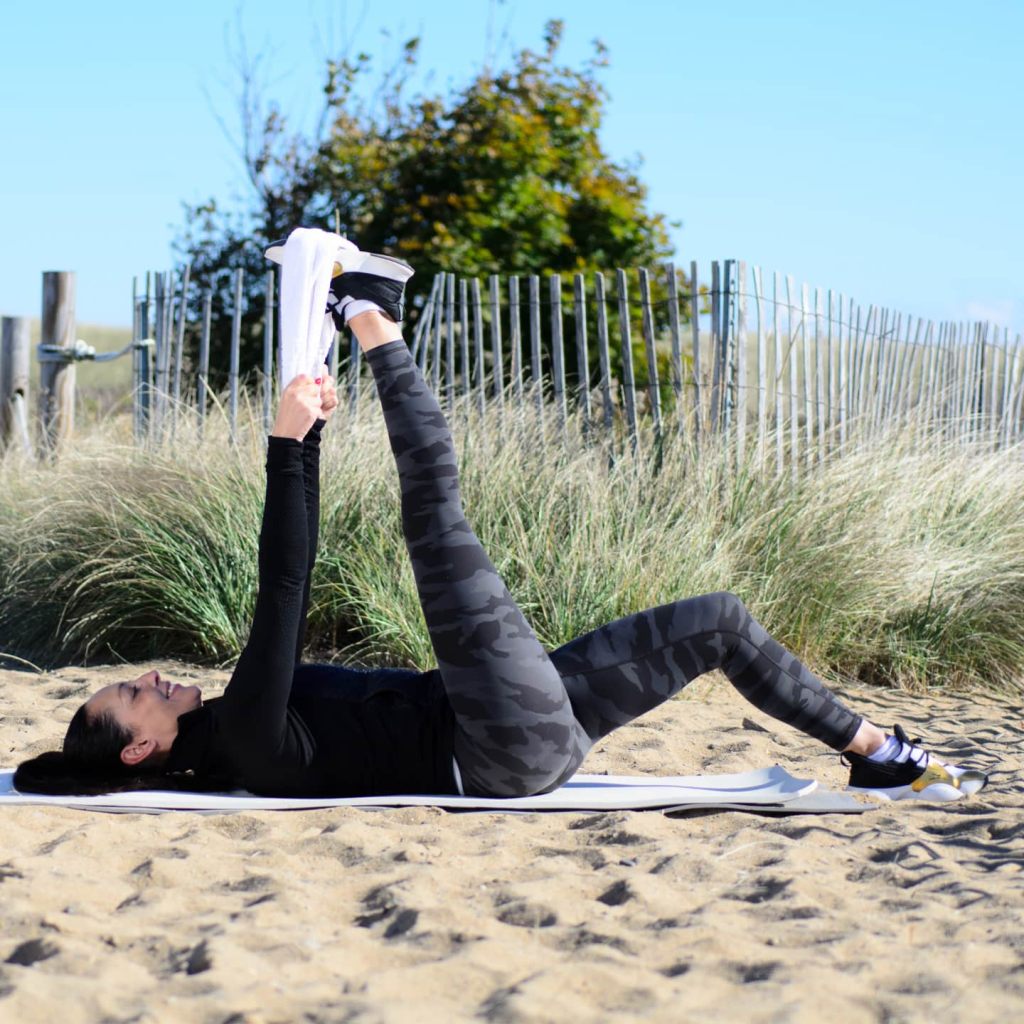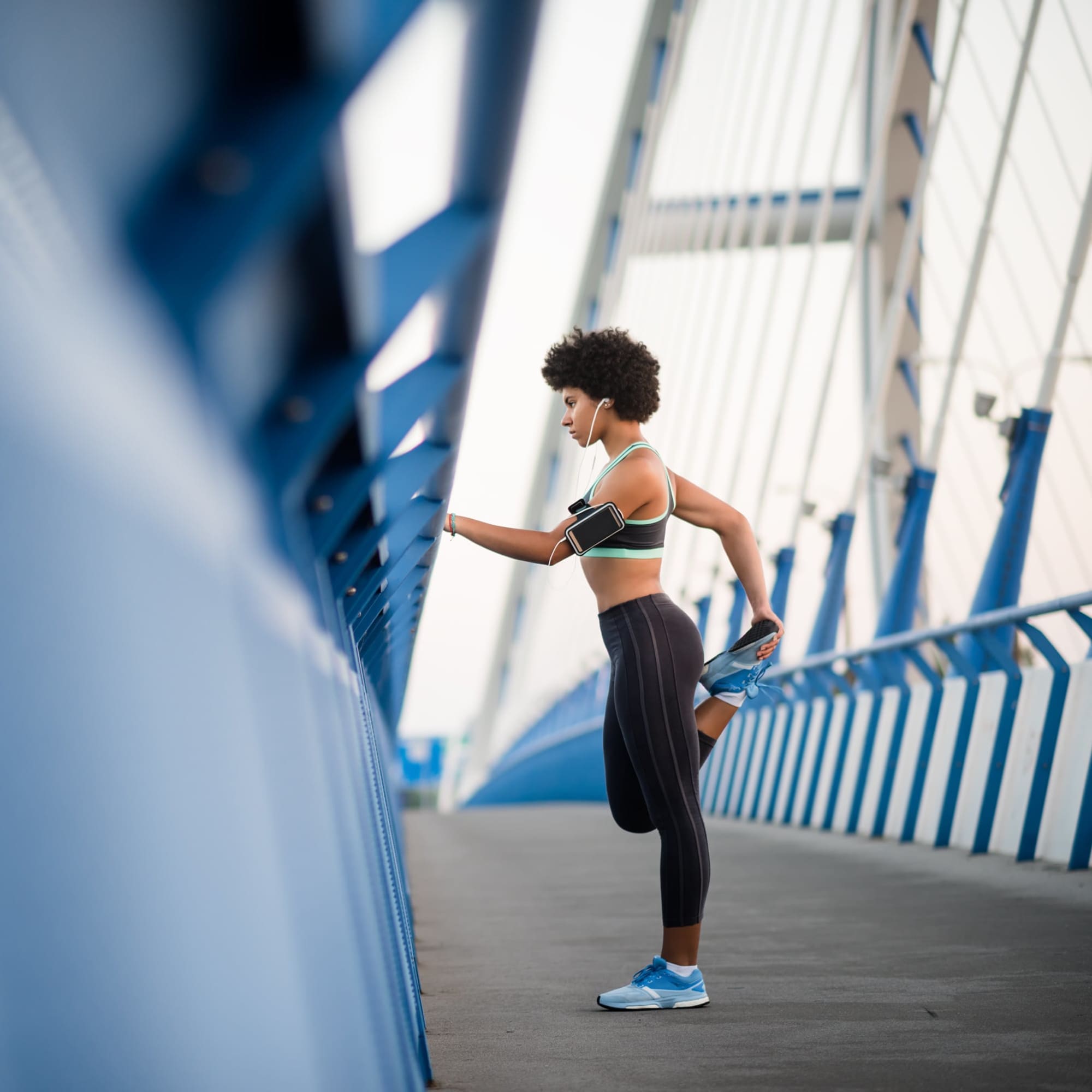
- POPSUGAR Australia
- Family
- 9 Barre Exercises That Can Greatly Benefit Runners
9 Barre Exercises That Can Greatly Benefit Runners

Many runners have a love-hate relationship with cross training, especially distance runners. After all, these athletes already spend so many hours training each week that the idea of squeezing in extra workouts can be unappealing. However, cross training plays a crucial role in a runner’s overall training program by ensuring the body stays balanced and healthy, ultimately helping to prevent injuries.
As a barre instructor for the last decade, I’ve seen many runners turn to barre to increase their strength, endurance, and flexibility; improve their posture and balance; and help counteract the muscle imbalances that can develop from long runs. I can usually spot a runner pretty quickly; they tend to shake the most during thigh work. While that may look like muscle weakness, it isn’t. It’s just that the isometric movements in barre class are very different from exercises like running or biking. Runners tend to have strong, developed legs, with the quad muscles being the most dominant and the hamstrings often being very tight. Thigh work challenges a runner’s strong thigh muscles to stay contracted for long periods, so they’re bound to shake and burn as the muscles become fatigued.
It may not always be comfortable, but barre can help address common runners’ issues like tight hip flexors and hamstrings, as well as weaknesses in the core and glute muscles. Try incorporating these nine barre moves into your routine, and don’t be surprised when your running game improves, too.
Single-Leg Glute Strengthener
This is a great exercise to help strengthen the glutes, as well as improve balance and coordination. The glutes are one of the most powerful muscle groups in the body. When they’re strong and firing properly, they can help improve a runner’s speed. Another benefit of single-leg work is that it helps stabilize and strengthen the ankles. This is important because when you run, you’re landing on one foot at a time.
- Stand with your feet hip-distance apart. If you like, you can press your palms together to help with balance, or place your hands on a steady support.
- Shift your weight onto your right foot, and lift your left heel off the floor. This is a good starting point to check your balance.
- Keeping your hips level and a slight bend in your right leg, start to hinge your torso forward from your hips. (Keep your back flat and your core engaged). At the same time, lift your left leg up to hip height or the height at which you feel your left glutes activate.
- Hold this position for 15 to 30 seconds, then lower your left leg down and switch sides.
Low Plank
In addition to strengthening your core, planks work muscles in your arms, shoulders, back, and glutes – all of which are beneficial to runners.
- Get into a plank position, lowering yourself down onto your forearms and straightening your legs so your shoulders, hips, and heels form one long line. If you feel like your lower back is arching, you can always begin by lowering your knees to the floor.
- Activate the muscles in your glutes and your core, and make sure you feel stable across your shoulder blades. Keep your head lifted and your neck and spine long.
- Start to focus on your breath. As you inhale, slowly expand your belly (imagine lowering your belly button toward the floor), then as you exhale, engage your core muscles (lifting your belly button up toward your spine). Start by holding your plank for five to 10 inhales and exhales, and as you continue to practice, you can increase the time you hold the plank.
- For more of a challenge, create a soft bend in your knees, which will slightly switch off the quadriceps and require you to use your core and glutes more to hold the plank. Inhale and exhale for five breaths with your knees bent, then straighten your legs for five inhales and exhales.
Hip Flexor Lunge Stretch
I recommend using a chair or any sturdy support to ease yourself into this stretch, especially if you have tight hips. Tight hips can be an issue for runners not only because they may cause discomfort but also because they make it more challenging for the glutes to activate, which can affect a runner’s power and speed.
- Lower yourself onto your knees in front of a steady support.
- Step your right foot forward, and place your hands on the support for balance. This will help prevent you from placing too much weight on your knee and hip flexors too quickly. Make sure your right knee is directly over your right ankle.
- Begin to slowly shift your weight forward. Try to keep your hips level, with your left hip facing slightly downward toward the floor.
- Allow yourself to find the depth in the lunge, where you feel a stretch in your left hip flexor. Stay in this stretch and breathe for 30 to 60 seconds, then switch legs.
Heel Lifts
The heel lift and calf strengthener is a staple in traditional barre classes. Not only does this move work to build strength in the calf muscles, but it also helps improve mobility and stability in the ankle. Ankle sprains can be common for runners, so this is a great move to incorporate to help prevent injuries.
- Stand with your feet hips-distance apart and parallel. If you like, you can rest your hands on a sturdy support for balance.
- Engage your core and glutes, and keep your legs straight.
- Start to slowly lift your heels up off the ground, then lower them back down. Try to avoid rocking your weight back and forth.
- Repeat 20 to 30 times, rest for a minute, and repeat.
90/90 Hip Stretch, Part 1: External Rotation
This two-part stretch is one of my favorites for releasing tightness in the hips and improving mobility. While the stretch can feel great, it can also be intense. You may want to grab a small pillow or rolled-up towel to modify this move.
- Sit on your mat, and bend your right knee so the knee is at a 90-degree angle in front of you. Your right knee should be directly in line with your right hip, and your right ankle should be in line with your right knee. Try to make sure that your right glute is resting on the mat.
- If your right knee is popping up off the floor, this is a sign of tightness or a deficit in external rotation of your right hip. You can place a pillow or towel under your right knee if it’s lifting off the ground or if this stretch feels too uncomfortable.
- Bend your left knee with your left foot stretched out behind you. Check that your left knee is in line with your left hip.
- Hold this stretch for 30 to 60 seconds. If you’d like to deepen the stretch in your right hip flexor, lengthen your spine and slowly shift your weight forward, placing your hands a few inches in front of your right shin.
- Move to part two of this stretch.
90/90 Hip Stretch, Part 2: Internal Rotation
For part two of this stretch, we’re going to focus on the back left hip flexor and the left hip’s internal rotation.
- Sitting tall, start to shift your position, lowering your left sit bone onto the mat as much as you can. If this is challenging for you, it’s likely a sign of tight hips and difficulty with the internal rotation of your left hip.
- Hold this stretch for 30 to 60 seconds. If that feels too uncomfortable, you can add movement by gently rotating your left hip forward and back. (Work in a range of movement that feels safe for your hips.)
- Repeat parts one and two of the 90/90 hip stretch with your left leg forward and your right leg back.
Kneeling Hip Stretch
Tight hips and inner thighs can throw off a runner’s balance and make it more challenging for the knees to stabilize. This is a great move to help stretch the inner thighs.
- Come down to kneel on both knees. Place both hands in front of you, directly below your shoulders. If you have trouble with your lower back, you can place your hands on yoga blocks, a bench, or a small chair.
- Extend your right leg directly out to the side, and press the inner edge of your right foot into the ground. You should feel a nice stretch up your right inner thigh. Hold this stretch, and breathe for 30 to 60 seconds.
- If you’d like to deepen the stretch, you can slowly rock your weight forward and back.
- Repeat on your left leg.
Inner-Thigh Strengthener
Strong inner thighs help stabilize the hips and knees and keep the feet and knees pointed forward during a run.
- To work your left inner thigh, lie down on your left side. Keep your core engaged, and press your left elbow and forearm onto the ground, directly under your left shoulder. If this feels uncomfortable, you can modify the exercise by lying all the way down and resting your head on your left arm.
- Bend your top (right) leg, and place your foot on the mat in front of you.
- Extend your left leg as straight as possible, then lift it up off of the ground just a few inches, before lowering it back down. Try to focus on lifting your leg from the inner thigh muscles in order to avoid using your hip flexor or swinging your leg up.
- Keep your core engaged, and try to keep your right hip stacked directly over your left as you move. Lift and lower your left leg 20 to 30 times, then switch sides and repeat.
Hamstring Stretch
Tight hamstrings prevent the legs from moving in their full range of motion and can also make it more difficult for the glute muscles to activate. Both of these issues can affect a runner’s performance.
- Lie down on your back, and bend both knees, planting both feet on the floor.
- Extend your right leg straight up in the air. Depending on your flexibility, you may want to wrap a towel or yoga strap around the ball of your foot in order to straighten your right leg while keeping your head and neck on the mat.
- Keep your left foot on the floor, and try to keep your hips level.
- As you inhale and exhale, gently draw your right leg toward you to deepen the stretch. Hold the stretch for 30 to 60 seconds.
- Switch sides, and repeat the stretch on your left leg.


